Discovering your child has accidentally ingested a household cleaning product can be one of the most terrifying moments of parenthood. You instantly start asking yourself questions: Was the product toxic? Will they get sick? How sick? Can it kill them? Not to mention, you have to get answers quickly and act on them to ensure the child’s safety and recovery. Accidental poisonings are responsible for 80% of all poison-induced deaths, which is a staggering statistic and one you never want a loved one to be part of. That being said, here’s where to start if you’ve found out your child is having complications from ingesting household cleaning products.
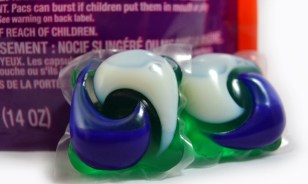
What To Do Immediately After Your Child Ingests a Household Cleaner
If possible, identify what the product was. If it was ingested directly from its original container, check the warning labels for specific care instructions and follow them. Anything with a corrosive element should generally be treated in the same way: drink a lot of water or milk to try and dilute the substance within the body and absorb dangerous substances. Some corrosive substances include:
- Acetic Acid
- Sulphuric Acid
- Hydrochloric Acid
- Sodium Hydroxide (Lye)
- Sodium Phosphate
- Ethanol
- Butyl Glycol
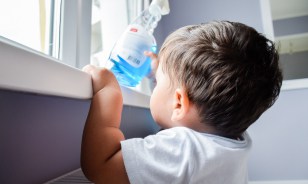
Additional toxic substances can include bleach, camphor oil, wintergreen oil, and pine oil. The latter three are essential oils that have gained popularity thanks to a variety of uses, and other substances listed are found in household items like laundry detergents, drain cleaners, air fresheners, and soap products. Any of these can cause severe internal burns and bleeding, and large quantities can result in death. Unless kept far out of reach, it would be easy for some of these colorful and visually appealing products to lure a child in.
If you or a loved one has ingested any of the above substances, immediately contact 911 and/or the National Poison Control Center for assistance, both of which are available 24 hours a day. Unless directed otherwise by a trained professional, do not induce vomiting, as that will only give the corrosive substance a second chance to damage the stomach, esophagus, and mouth.
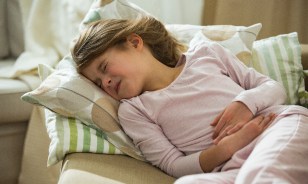
Symptoms of Poisoning
If you’re not sure what your child has gotten into, the best thing to do (while contacting emergency services) is monitor the child’s symptoms. There are several things to look out for, and if you can list a few specific issues, the Poison Control Center could likely do more to guide you in treating the child. The results may vary depending on the product, but symptoms include:
- Abdominal pain
- Burns in the mouth and throat
- Vomiting
- Bloody stool and/or vomit
- Nausea
- Confusion
- Seizures
- Loss of consciousness
- Difficulty breathing from throat swelling
- Unusual skin coloring
Anything causing burning, bloody vomit or stool, and/or swelling of the throat was likely a corrosive substance. In smaller amounts, this can be treated by diluting the ingested amount with large quantities of water or milk as mentioned above, but you should keep an eye on the child’s condition until you’re certain the threat has passed. If emergency services recommend you go to the hospital, do so immediately.
Because ingesting large amounts can lead to death, it’s always better to be cautious and prepared rather than allow yourself to wait around for things to get worse. Take action and tend to both the symptoms and the underlying cause as best as you’re able to and follow the instructions given to you by professionals.
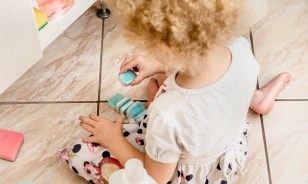
How to Treat Poisoning
As mentioned above, immediate treatments may include ingesting large amounts of water or milk until either paramedics arrive or you get the child to an urgent care facility or emergency room. However, once you’re there, the medical professionals will ask which substance was ingested and use that information to determine a course of action. They will also examine all of the patient’s vital signs to make sure that the child is not in immediate danger. Heart rate, ease of breathing, mental presence, and body temperature are all things that the doctor will consider. If any of these signs indicate brain damage or other life-threatening complications, they will react accordingly.
For many poisons, there are antidotes available for a patient to take that will counteract whatever symptoms they’re experiencing. Additionally, medical professionals in emergency rooms may choose to provide:
- Intravenous fluids to assist with flushing out the harmful substance
- Treatments for any burns that were sustained
- Medication for any pain the child is in
- Oxygen for anyone experiencing trouble breathing
- An endoscopy or bronchoscopy to examine the extent of damage done to the esophagus and stomach or airways, depending on whether the product was swallowed or inhaled.
Naturally, the sooner the necessary treatments can be administered, the less likely it is for there to be lasting negative effects on the child. It’s vital that you act quickly once you discover that your child has ingested a cleaning product, so don’t hesitate to call 911 or the National Poison Control Center even if you haven’t had the chance to figure out what product was ingested or what symptoms the child is experiencing yet. Get on the phone and let someone help walk you through it all.
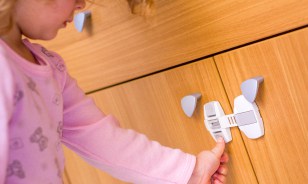
Preventing Household Cleaner Poisoning
The first and most effective way to prevent household cleaner poisoning is to keep products like cleaners, detergents, and bleach, air fresheners, etc. out of the reach of children. This can be easier said than done sometimes, but it’s a crucial first step. If you’re actively using a product or several, ensure that you have decent ventilation in whatever space you’ve set up within so that harmful fumes don’t have the chance to build up. If you can’t avoid being stuck in a small space with the fumes, take frequent breaks and use a face mask if at all possible.
Additionally, it helps to keep yourself up to speed on what kinds of chemicals are harmful when ingested or inhaled. Read labels frequently to make sure you know which chemicals are included in which products as well. This will help you be more prepared in the event that you discover your child has gotten into one of those particular products and save you valuable time.
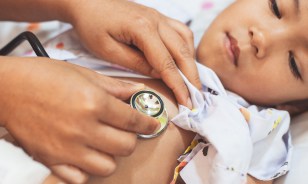
If you or someone you know has an emergency related to ingesting household cleaning products, call the poison control center, 911 or visit an emergency room near you immediately. With locations in Clear Creek and Jersey Village, we’re dedicated to providing expert medical care for any emergency. Our doors are always open even on holidays with no wait time. Emergencies don’t wait which is why you shouldn’t either. Walk into any location or check-in online today.
